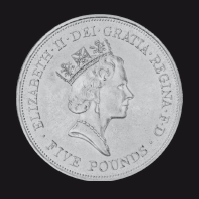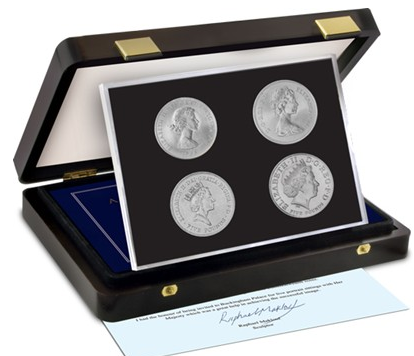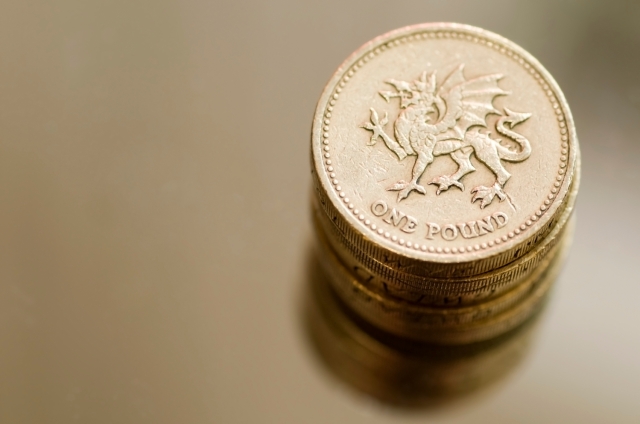Posts by Ian Glen
Portraits of a Queen – the changing face of Britain’s coinage
Discover a little of the history behind the Queen’s effigy and vote for your favourite portrait.
As well as the 60th Coronation Anniversary, 2013 marks the 60th Anniversary of the Queen’s coinage.
The first Queen Elizabeth II coins were struck in 1953 and since then four different effigies adorned our coins.

1953 – 1967: Mary Gillick
The first coins of Queen Elizabeth’s reign bore Mary Gillick’s portrait of the young Queen, engraved especially for the new coins.
Her uncrowned portrait of the Queen is still used on the Maundy Money distributed each year by Her Majesty.
With the upcoming decimilisation, it was decided to refresh the Queen’s portrait with Arnold Machin’s new sculpture of the Queen. Commissioned in 1964, it first appeared in 1968 on the new 5p and 10p coins. A version of the design with tiara was also introduced on stamps in 1967 and remains to this day.

1985 – 1997: Raphael Maklouf
In creating his new effigy of Her Majesty, Raphael Maklouf aimed “to create a symbol, regal and ageless”.
His “couped” portrait depicts Queen Elizabeth II wearing the royal diadem favoured by her on the way to and from the State Opening of Parliament.
 1998 – current: Ian Rank-Broadley FRBS
1998 – current: Ian Rank-Broadley FRBS
The current Queen’s head on our coinage was designed in 1997 by Ian Rank-Broadley. Created to fill the full circle of the coin, its larger size was a deliberate response to the smaller 5p and 10p coins in circulation. A noticeably more mature portrayal of Her Majesty, Rank-Broadley aimed to show the Queen with “poise and bearing”.
You can own all four Portraits on original UK Crowns.
Click here for more info about the Portraits of the Queen 4-coin set
Why you should be Checking your Change
I expect that, like me, you were brought up to “check your change”. But it has never meant more than now.
Last year, the Royal Mint launched twenty-nine 50p coins into circulation, one for each of the Olympic disciplines. The result: a nation suddenly keen to check the coins in their pocket, hoping to build a complete collection.
In 20 years in the coin business, it was the very first time I had seen people of all ages genuinely interested by the coins in their change.
But the story should not stop with the Olympic 50p coins.
In fact the Royal Mint has been varying £1 coin designs since the coin was very first issued 30 years ago. Remarkably the 50p first saw a commemorative design in 1973, before they became a regular feature of the UK’s coinage during the 1990s. Similarly, £2 coins were used for commemorative coins as early as 1986, well before the current bi-metallic coin, which went into circulation in 1997, with its first commemorative design being released in 1999 for the Rugby World Cup.
The only collection that will cost you nothing
 Of course the joy of change collecting is that it is totally free. Simply keep an eye on the coins in your change and very quickly you’ll own an historic collection of some the UK’s finest coin designs.
Of course the joy of change collecting is that it is totally free. Simply keep an eye on the coins in your change and very quickly you’ll own an historic collection of some the UK’s finest coin designs.
But now it is even easier to collect the coins in your pocket with the launch of www.changechecker.org. This completely FREE site is available for mobiles, tablets and PC to help you collect your pocket change wherever you are.
Simply identify your coin by denomination and year to keep track of whether you already own it or not. Plus, if it’s a spare, you can quickly and easily find someone to swap your coin with. All without spending a penny (or any other denomination come to that).
Click here to visit www.changechecker.org.
Discover more about Change Checker with your 60 second guide.
The £1 coin – thirty years old and still going strong
Whether routing through our purses, pockets or piggy banks, the one coin we’re always pleased to see is the £1. Incredibly, despite our reliance on plastic, phone payments and online banking, the £1 coin still plays a part in our daily lives, just as it did 30 years ago.
Why do most of us like it so much?
Introduced on 21st April 1983, the new £1 coin was an instant hit (although the Iron Lady herself, then PM, was said to dislike it). Big, bright and reassuringly chunky, it was built to last a lot longer than the paper pound note. A whole 40 years compared to a paltry nine months. It was also considered more practical for supermarket trolleys, parking meters and vending machines.
Not the real deal
Today there are an estimated one and a half billion £1 coins in circulation in the UK, according to The Royal Mint who struck them all. True to their word, original 1983 coins still turn up regularly in our change. On the down side, they’re easy to fake. It’s estimated that as many as 1 in every 35 are counterfeits.
Less for your money
During the last thirty years, the coin itself has had no less than 21 new reverse designs and 3 different portraits of the Queen. What it can actually buy you has also changed over time. According to the Office for National Statistics, a loaf of bread cost on average 38p in 1983. Thirty years later, that same loaf costs over three times as much. A pint of milk that was 21p back in ’83 has now more than doubled to 46p.
There have been changes to the way people pay for their shopping too. According to figures from the Payments Council, in the 1980s, cash accounted for 86% of payments in the UK, but by 2011 this had dropped to just 55%.
Whether the £1 coin will still be with us in another 30 years remains to be seen. For the time being though, it looks set to stay – a true British numismatics treasure.




